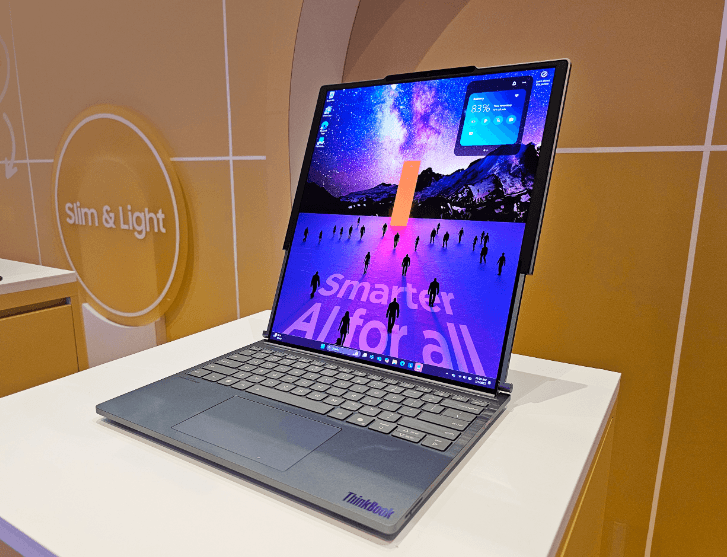
Samsung Display is building on the “rollable OLED” concept first conceived by its rival LG Display, using the same innovation to create expandable laptop screens.
The company said its first expandable laptop displays will go into mass production in April, and the first products featuring them will go on sale by the summer.
The new technology will enable smaller form-factor laptops that can be expanded to become much bigger when necessary, making portable big screens a reality.
Samsung revealed the new display during CES 2025 earlier this month, where it admitted that it has borrowed some ideas from LG, which famously introduced the rollable OLED Signature R TV several years ago.
They also build on the foldable smartphone concept to an extent. Devices such as the Galaxy Z Fold6 also feature OLED displays, which can be folded thousands of times without damaging the product.
Samsung’s rollable OLED laptop displays will go into production in April, the company confirmed. It said they will enable laptop screens to be extended by almost 50%. The display measures 14-inches diagonally when retracted and offers a 5:4 aspect ratio and resolution of 2000x1600 pixels. But when extended, it will grow to 16.7-inches, with an 8:9 aspect ratio and a 2000x2350 pixel resolution.
The panel actually measures just over 18-inches, Samsung said, but part of it will remain hidden underneath the keyboard.

Samsung Display’s Head of IT sales Youngseok Kim brushed aside any concerns that the constant extending and retracting might cause the panel to degrade, similar to the problems experienced by some users with the company’s first foldable OLED phones.
“It may experience stress, but based on our foldable mass-production experience, we have designed to ensure durability in our rollable products,” Youngseok told FlatPanels HD. “The rollable display will bring innovation to IT devices, especially in terms of mobility and user experience.”
The first product featuring the new display will be the new Lenovo Thinkbook Plus G6 Rollable device, and it’s set to go on sale globally in June.
According to Samsung, the panel is based on a new Eco² OLED structure, which improves energy efficiency by 30% and is even thinner than standard OLED. It can reach 400 its brightness and has a 120Hz refresh rate, with 100% coverage of the DCI-P3 colour gamut, the company added.